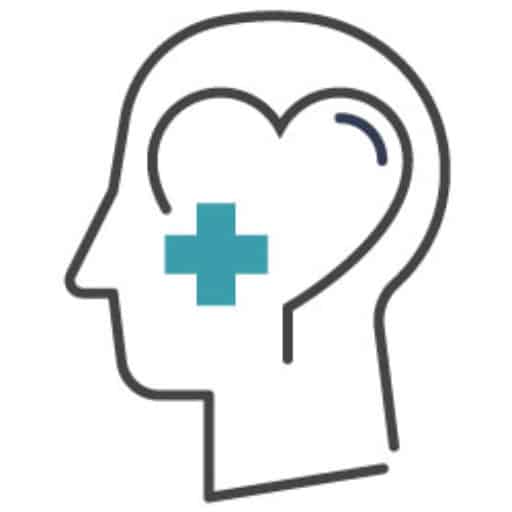A 17-year study, published in 2022, looked at how solitary alcohol use during adolescence predicts AUD (alcohol use disorder) in adulthood. The longitudinal study reviewed a large sampling of high school students from across the United States, following them into their 30s. Here’s what the study concluded and why it’s important to understand the risks of youth drinking.
Study Overview: Background and Method
The study set out to identify risk factors for alcoholism and alcohol use disorder, citing that this is important for public health. The intention of the study was to evaluate whether solitary alcohol use at the age of 18 and the age of 23/24 was linked to binge drinking and/or development of AUD by age 35. The study also looked at whether biological sex played a factor in a tendency towards alcoholism and binge drinking.
Methods
The study looks at data from Monitoring the Future (MTF), which has surveyed around 15,000 12th-grade students from 130 schools in the United States each year since 1975. This study looks at survey results for the 18-year-olds surveyed from 1976-2002, some of whom were randomly selected to complete follow-up surveys at ages 19 and 20. A portion of them was surveyed again from 1981-2008 (at ages 23 and 24). Of the original group of 12th-graders, 5,779 (49.%) responded to the follow-up data collection at the age of 35. To understand how alcohol affected the participants at 35, they were asked to answer questions about the frequency with which they consumed alcohol in the previous years and what impact drinking had on their life.
The study was divided into two groups or models: adolescents (age 18) and young adults (age 23/24). The results provide insight as to which age group is more vulnerable to AUD in adulthood if they engaged in youth drinking.
Why Is Youth Drinking a Problem?
Youth drinking is a significant public health problem in the United States. According to the CDC, excessive alcohol consumption accounts for more than 3,900 deaths annually in people under 21 years old. Despite laws to prevent underage drinking in America, around 29% of high school students in the United States report drinking alcohol, and 14% have engaged in binge drinking within the past 30 days. For the purposes of this study, binge drinking was described as having five or more drinks in a row.
There are many dangerous outcomes associated with underage drinking, such as:
- Alcohol poisoning
- Motor vehicle collisions (when drinking and driving)
- Changes in brain development
- Memory problems
- Higher risk of suicide
Alcohol has many harmful effects on young brains. The longer-term effects of underage drinking include potential damage to brain cells, specifically in the prefrontal cortex. If this occurs, the individual may have problems with their judgment and decision-making as an adult. If you suspect your child is engaging in underage drinking behaviors, it’s important to educate them on the risks.
What the Study Suggests About the Link Between Youth Drinking and Alcoholism
According to the study, there’s a relationship between age and patterns of alcohol consumption. The findings of this 17-year study indicate that young adults (22.4%) drink alcohol with more frequency than adolescents (16.1%), but rates of solitary alcohol consumption were higher among the adolescent population.
The correlation between age and alcoholism explored in this study appears to be that drinking excessively in your adolescent and young adult years increases the chance of developing alcohol use disorder in your mid-30s.
The CDC states that young adults and youth who are surrounded by adults who drink are more likely to engage in these behaviors. When an adult community sees a 5% increase in the level of binge drinking, there’s a correlating 12% rise in underage drinking.
Study Results
The results of the study found that of participants in the adolescent group, 32.8% had symptoms of AUD at age 35. Of the participants in the young adult group, 31.1% had AUD symptoms at age 35. So, which age group is most vulnerable to alcohol dependence?
According to the outcome of this 17-year study, individuals who engage in solitary youth drinking during adolescence (age 18 group) were more likely to experience symptoms of AUD at 35 than those in the young adulthood age group. This suggests that adolescent alcohol use is more detrimental to long-term health than drinking for young adults.
Study Conclusion
Ultimately, the study concluded that both adolescents and young adults who engage in solitary alcohol use are at an increased risk of developing AUD symptoms in adulthood. The results indicate that solitary drinking at a young age heightens the chance of AUD in adulthood more than any other risk factors. It also found that female adolescents were at the highest risk.
The Reasons for Late-Onset Alcoholism
Early-onset drinking can result in alcoholism in early adulthood or later in life. There’s a growing issue in America with older adults developing symptoms of AUD. There are many possible reasons for late-onset alcoholism, and unfortunately, friends and family may be slow to realize the condition is present because they believe the older person has already established their relationship with the substance by that age.
Because alcohol works on the pleasure centers of the brain, causing potential for addiction, there are many reasons older adults may turn to alcohol during difficult times. Some examples include:
- Losing a loved one
- Experiencing boredom or isolation after retirement
- Experiencing empty nest syndrome when children move out
- Suffering with physical health conditions
If this occurs, late-onset alcoholism may be a risk.



